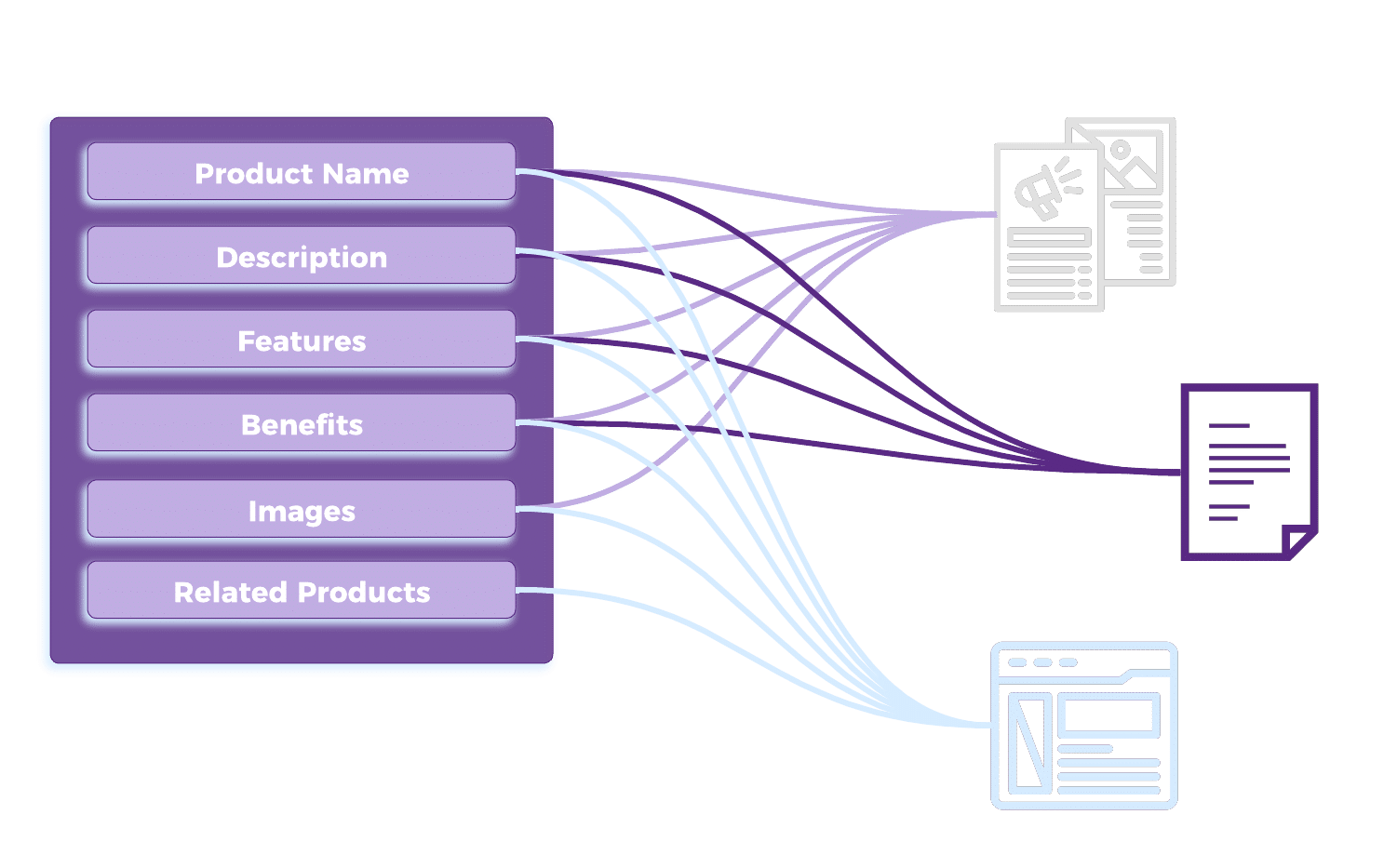
The Challenge
A global leader in telecommunications recently embarked on a digital content transformation journey to solve two key challenges:
- Content Marketing efficiency needed to be improved. Marketers were managing multiple copies of go-to-market (GTM) content and sales collateral. When product information was inevitably changed, updates had to be made in multiple content objects and systems.
- Sales Enablement content needed to be more findable. Sellers had to look in multiple systems for sales collateral, not being able to trust if the collateral they found had the most current product information.
In addition to these strategic marketing operations drivers, the company needed a solution that addressed the following challenges:
- Sales team frustration over labor-intensive search experiences
- Lack of accessibility of relevant and reliable content across departments
- Content consumers sorting through structurally inconsistent content about products, solutions, and services
- Content creators managing complex workflows and duplicate content across multiple systems during content operations and curation processes
- Enterprise misalignment on the system of record caused by a lack of cohesive understanding of the function of each system in the organization’s technical ecosystem
Duplicate and overlapping GTM content, inefficient content operations, and difficulty finding reliable sales collateral were costing the company a great deal and the problem demanded an urgent solution.

The Solution
Enterprise Knowledge (EK) partnered with the company for an end-to-end content strategy and engineering engagement. EK worked closely with client stakeholders across sales, marketing, and IT departments and conducted multiple focus groups, interviews, and system demos to understand the current state of the organization’s GTM content and content technology. EK then co-designed an updated content strategy which leveraged structured product content to optimize content operations, enabling multi-channel publication of GTM content and sales collateral.
EK’s team collaborated with key project stakeholders to design a product content model. EK’s consultants defined the structure of products, the relationship between product components, and the taxonomy necessary to traverse those relationships. The product content model now enables the intelligent assembly of sales collateral, as well as multi-channel publishing to multiple user experiences including sales enablement portals, marketing websites, mobile applications, and social media.
In addition to delivering the content strategy and product content model, EK provided the architecture and development of an enterprise content ecosystem. Expert solution architects collaboratively documented a comprehensive list of requirements and analyzed the organization’s current content tech stack. EK leveraged content strategy insights from related workstreams to identify cross-departmental touchpoints that would benefit from specific systems and illustrate where necessary taxonomy and content management system integrations would enhance content operation processes. The target solution enabled digital asset management, complex workflows, content reuse, dynamic content assembly, and multi-channel publishing.

EK delivered a solution for enterprise management of GTM content and sales collateral that leveraged prior work and analyses to create a fully customized, iterative, and immediately actionable roadmap and recommendation report for this client’s GTM content strategy. The roadmap and recommendation report included guidance for continuing the iterative development of a scalable enterprise content solution. This roadmap will help the organization sustain long-term GTM content strategy and outline short-term wins that can be implemented on a shorter timeline, including clear descriptions of how each task or workstream will benefit the organization’s business outcomes.

The EK Difference
EK’s advanced expertise in content engineering and enterprise content solutions enabled the company to optimize marketing operations and improve sales enablement outcomes. As part of our human-centered solution design methodology, EK’s team collaborated with key project stakeholders during our iterative design and development process. Our team also worked directly with system end users to ensure our understanding of their needs and concerns was accurate when designing a solution and delivering our final recommendations. EK’s Knowledge Management (KM) expertise allowed for secure multi-channel publishing to both an internal channel for sales enablement and external marketing channels while keeping product information secure and consistent.

The Results
This content engineering engagement supplied the company with a holistic product content model that unified cross-departmental product information and supporting metadata to streamline marketing operations. A centrally managed and consistently applied product taxonomy improves sales consistency and centrally managed structured product content reduces the time to publish GTM content and sales collateral.
In addition to improved marketing operations, sellers in the organization are able to find all product information and relevant sales collateral in one place instead of 10 distinct content repositories. This dynamic Sales Enablement Portal improves sales conversion and win rates, and supports more holistic conversions–facilitating cross-selling and up-selling when sellers are able to more quickly find reliable product information.

